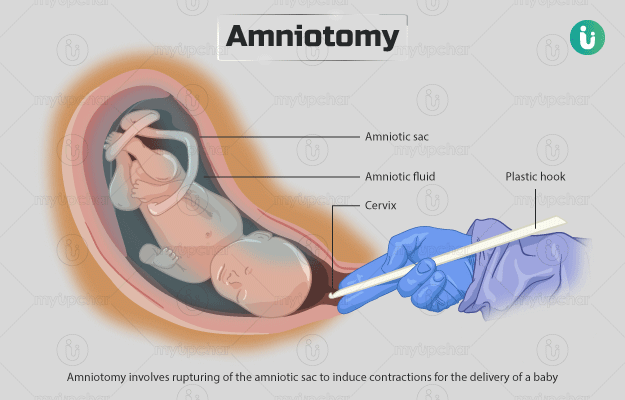Summary
Amniotomy involves rupturing of the amniotic sac (a sac inside the uterus that contains amniotic fluid and protects the baby) to induce contractions for the delivery of a baby. The procedure is done in case of conditions such as an overdue pregnancy, health issues like high blood pressure in the mother, birth of more than one baby during the delivery, and slow growth of the baby. You will have to carry sanitary pads and things needed for the care of your baby to the hospital before delivery. The doctor will insert a small hook in your cervix that will break your amniotic sac and initiate contractions for the delivery. After the birth, you will need special care to manage pain, discomfort and bleeding issues before you can resume your regular activities.










































